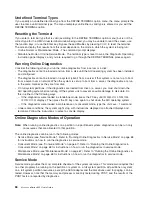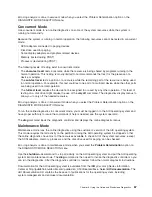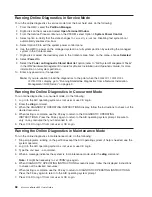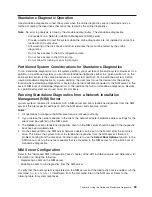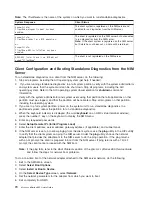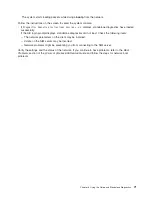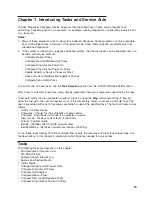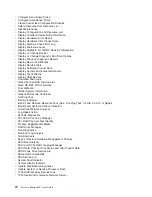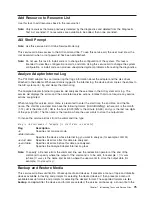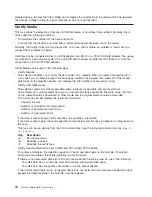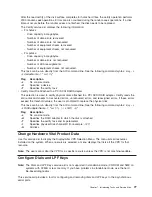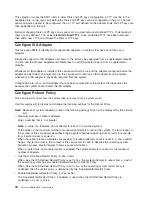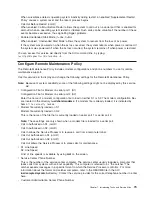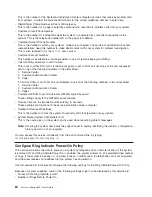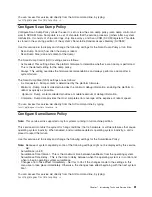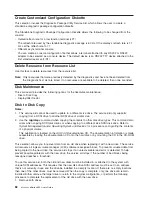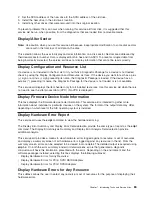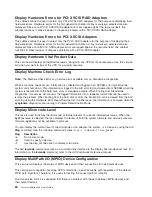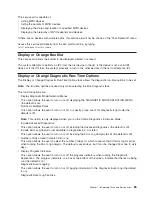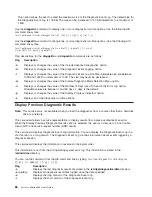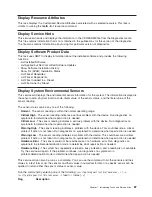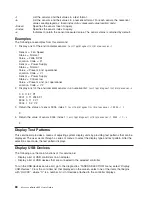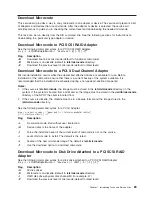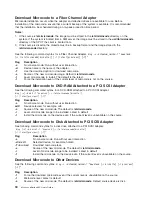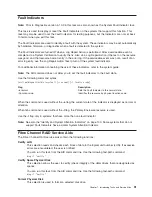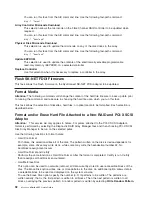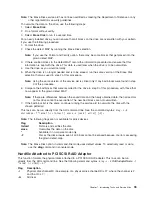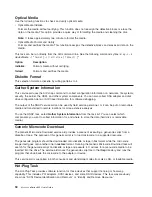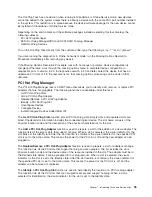
This
is
the
number
of
the
System
Administration
Center
computer
(catcher)
that
receives
problem
calls
from
systems.
Contact
the
system
administrator
for
the
correct
telephone
number
to
enter
here.
v
Digital
Pager
Phone
Number
In
Event
of
Emergency
This
is
the
number
for
a
pager
carried
by
someone
who
responds
to
problem
calls
from
your
system.
v
Customer
Voice
Phone
Number
This
is
the
number
for
a
telephone
near
the
system,
or
answered
by
someone
responsible
for
the
system.
This
is
the
telephone
number
left
on
the
pager
for
callback.
v
Customer
System
Phone
Number
This
is
the
number
to
which
your
system’s
modem
is
connected.
The
service
or
administration
center
representatives
need
this
number
to
make
direct
contact
with
your
system
for
problem
investigation.
This
is
also
referred
to
as
the
Call
In
phone
number
.
v
Customer
Account
Number
This
number
is
available
for
service
providers
to
use
for
record-keeping
and
billing.
v
Call
Out
Policy
Numbers
to
call
if
failure
This
is
set
to
either
First
or
All.
If
the
call-out
policy
is
set
to
First,
call
out
stops
at
the
first
successful
call
to
one
of
the
following
numbers
in
the
order
listed:
1.
Service
Center
2.
Customer
Administration
Center
3.
Pager
If
Call
Out
Policy
is
set
to
All,
call-out
attempts
to
call
all
of
the
following
numbers
in
the
order
listed:
1.
Service
Center
2.
Customer
Administration
Center
3.
Pager
v
Customer
RETAIN
Login
ID
Customer
RETAIN
Login
Password
These
settings
apply
to
the
RETAIN
service
function.
v
Remote
Timeout,
in
seconds
Remote
Latency,
in
seconds
These
settings
are
functions
of
the
service
provider’s
catcher
computer.
v
Number
of
Retries
While
Busy
This
is
the
number
of
times
the
system
should
retry
calls
that
resulted
in
busy
signals.
v
System
Name
(System
Administrator
Aid)
This
is
the
name
given
to
the
system
and
is
used
when
reporting
problem
messages.
Note:
Knowing
the
system
name
aids
the
support
team
in
quickly
identifying
the
location,
configuration,
history,
and
so
on
of
your
system.
You
can
access
this
service
aid
directly
from
the
AIX
command
line,
by
typing:
/usr/lpp/diagnostics/bin/uspchrp
-m
Configure
Ring
Indicate
Power-On
Policy
This
service
aid
allows
the
user
to
power-on
a
system
by
telephone
from
a
remote
location.
If
the
system
is
powered
off,
and
Ring
Indicate
Power
On
is
enabled,
the
system
powers
on
at
a
predetermined
number
of
rings.
If
the
system
is
already
on,
no
action
is
taken.
In
either
case,
the
telephone
call
is
not
answered,
and
the
caller
receives
no
feedback
that
the
system
has
powered
on.
Use
this
service
aid
to
display
and
change
the
following
settings
for
the
Ring
Indicate
Power-On
Policy:
Because
of
system
capability,
some
of
the
following
settings
might
not
be
displayed
by
this
service
aid.
v
Power
On
Via
Ring
Indicate
(on/off)
v
Number
of
Rings
Before
Power
On
80
Eserver
pSeries
655
User’s
Guide
Summary of Contents for p 655 series
Page 1: ...pSeries 655 User s Guide SA38 0617 03 ERserver...
Page 2: ......
Page 3: ...pSeries 655 User s Guide SA38 0617 03 ERserver...
Page 10: ...viii Eserver pSeries 655 User s Guide...
Page 14: ...xii Eserver pSeries 655 User s Guide...
Page 16: ...xiv Eserver pSeries 655 User s Guide...
Page 24: ...6 Eserver pSeries 655 User s Guide...
Page 32: ...14 Eserver pSeries 655 User s Guide...
Page 36: ...18 Eserver pSeries 655 User s Guide...
Page 90: ...72 Eserver pSeries 655 User s Guide...
Page 144: ...126 Eserver pSeries 655 User s Guide...
Page 208: ...190 Eserver pSeries 655 User s Guide...
Page 214: ...196 Eserver pSeries 655 User s Guide...
Page 217: ......

